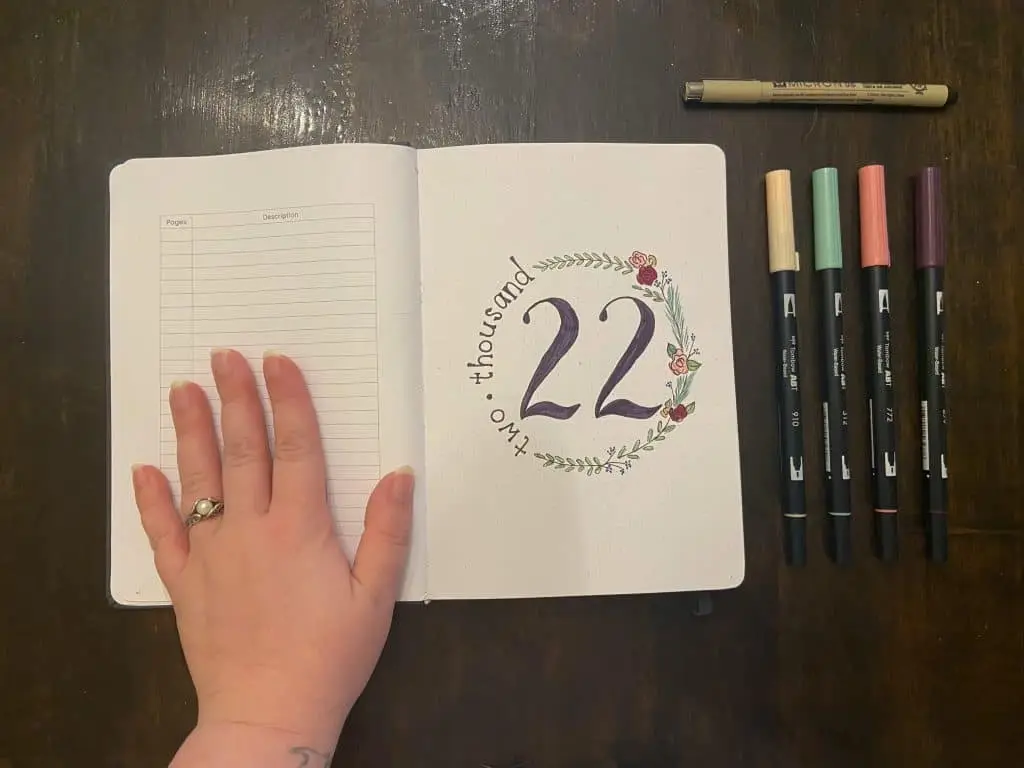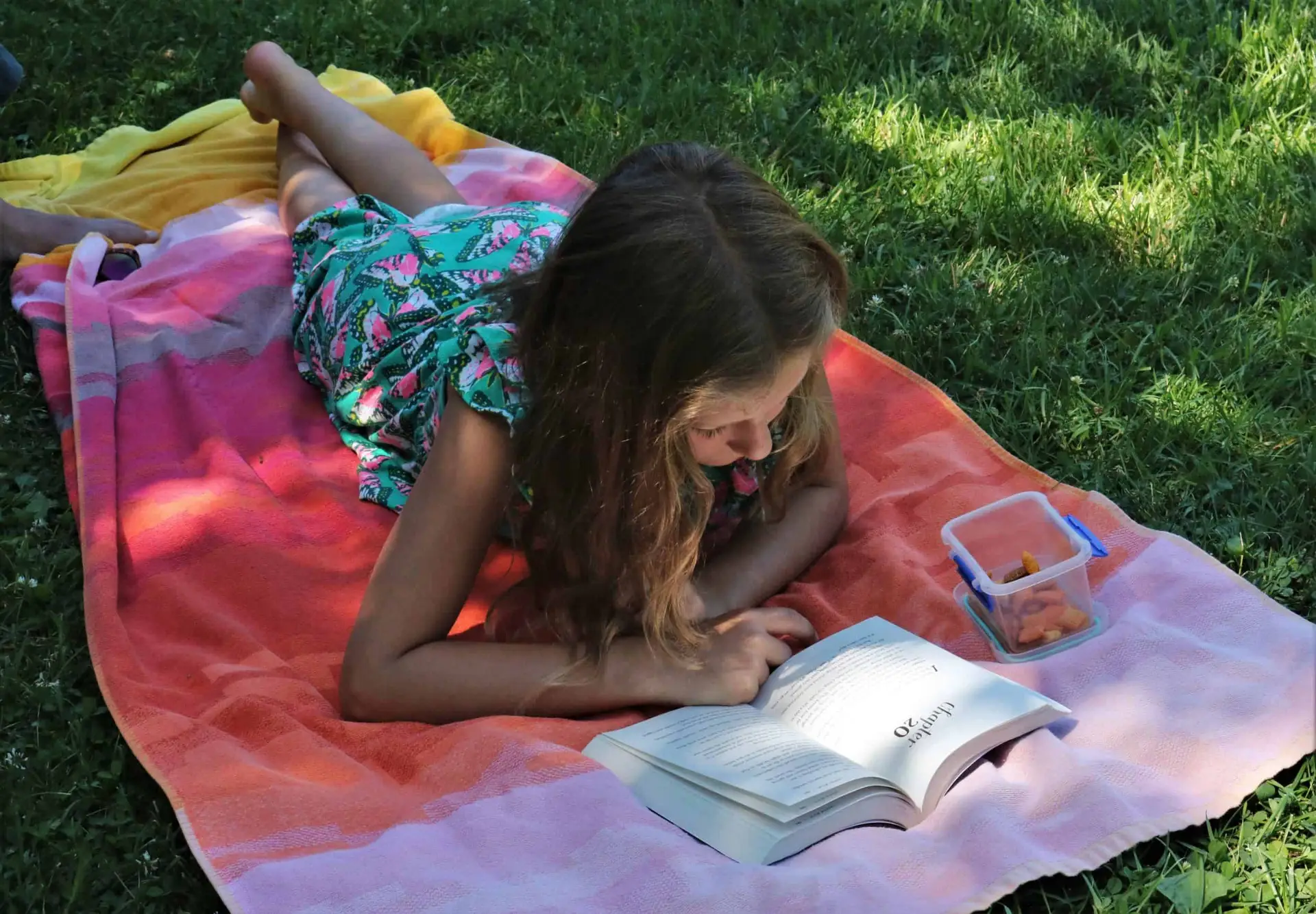In recent years, bullet journaling has taken the world by storm. It’s all the organization of a planner with all the flexibility of a journal.
The original bullet journal method was created by Ryder Carroll and was used as a way to compile events, tasks, reminders, and brainstorming all in one notebook. You can learn more about his bullet journaling method on his website, bulletjournal.com, or on his YouYube channel.
While this system was created by Ryder Carroll to make his life simpler and more organized, bullet journaling has taken on a life of its own that the original creator likely never saw coming.

While there are still people who bullet journal for the simplicity of it, there are also people who put their spin on it and create beautiful elaborate journal setups and spreads. As a matter of fact, for a lot of people, the creative side of bullet journaling is what draws them in. People are even making a living posting YouTube videos showing other people how to set up their journals every month.
There is no shortage of videos on different types of setups, spreads, trackers, and more, and while this can be very helpful, it can also be overwhelming. Unfortunately, for as many monthly “Plan With Me” videos there are on Youtube, there are equally as many “Why I Quit Bullet Journaling” videos. There are a few major pitfalls that people fall into that make them quit journaling:
- Their journal has no purpose.
- They went too hard, too fast.
- They’re terrified of messing it up.
With that in mind, let me give you a few ideas for how to begin bullet journaling in a way that is intentional and hopefully helps you avoid these issues.
Before You Get Started: Is Bullet Journaling Right for You?
I love my bullet journal and am not trying to talk anyone out of it, but that being said it’s not the right choice for everyone. You can save yourself a lot of time, effort, and frustration if you figure that out now!
If your main objective for wanting to bullet journal is because you like being able to write down all of your important dates, tasks, and events but you don’t care at all about the creative or personalizable side, then bullet journaling may not be for you. There are incredible pre-made planners out there that can fill your need without you needing to physically write out calendars and create layouts yourself. There are even planners like the Passion Planner and Cultivate What Matters that have additional focuses like goal planning or gratitude that help bring in the mindfulness of a bullet journal.
On the opposite end of the spectrum, if you’re someone who really loves being creative and artistic but doesn’t care much for documenting things daily in a journal, then you might find that you’re putting in a lot of effort for something that isn’t beneficial for you.
If you’ve thought through it and still think you’d like to give bullet journaling a try then let’s get started!
Step 1: What’s Your Purpose?
Before you ever even put pen to paper, I highly suggest you think through what things you’re hoping to accomplish with bullet journaling. Taking this important step ensures that you’re focusing on the right things and not making unnecessary work for yourself, and therefore you’re less likely to burn out.
When I first decided I wanted to start bullet journaling, I completely skipped this step and just jumped in headfirst. I picked my favorite bullet journaler on YouTube and followed their setup exactly. The problem was that I was spending way more time on it than I wanted to, and I wasn’t using half of the spreads that I was creating. It was frustrating and I quickly quit, not even making it through February.
If your main objectives with your journal are monthly planning, tracking healthy habits, and using it as a creative outlet, then chances are you don’t need to create a financial tracker, a brain dump page, or even weekly setups.
I want to keep up with monthly important dates, track my habits, and compile all my important notes like sermon notes, prayer requests, etc. all in one place. It’s also a calming creative outlet for me. So, my monthly setups consistently include some doodles, a monthly calendar, a prayer dashboard, and my habit trackers.
Once you’ve done some brainstorming on what the purpose of your bullet journal is, you can move on to Step 2.
Step 2: Plan Your Setup
We’re still not touching our pens and markers yet. The next step is simply making a plan for what kinds of spreads you want to include and thinking through a theme, style, and or color scheme.
Trust me, I know you want to just jump into it, but if you take just a little bit of time to plan things out before you start drawing, you’ll make fewer mistakes and be less overwhelmed when looking at the blank pages. Plus, it’ll ultimately go quicker.
Pinterest is a great place to find different spread ideas, but you also can just do your own thing. If you want a place to record what books you read each month it can be as simple as creating a header that says “Books I’ve Read” and leaving it at that. Or you can make a decorative elaborate spread that displays that same information. It’s completely up to you!
When I’m planning out a month, typically I will write down the order that I want to create my spreads in and how many pages I want them to take up. So for me, this might look like this:
- Cover Page – 1 page
- Dashboard – 1 page
- Calendar – 1 page
- Mood and Habit Trackers – 1 Page
- Notes – 2 pages
Another thing I like to go ahead and do is look for some theme or design inspiration and come up with a color scheme if I’m going to use color. You can make this as intricate or as simple as you want. My favorite people to get inspiration from are Shayda Campbell, Rylee Autumn, and Caitlin’s Corner.
Now that you’ve got your basic outline and a theme or color palette, let’s grab our journals and get started!
Step 3: Setup Your Bullet Journal
Now for the step you’ve all been waiting for: setting up your bullet journal! Way to go! You made it! You can now take all those great design ideas and spreads that you’ve found and recreate them in your style.
I’d suggest doing a couple of things to help you with this step.
- Pencil things out before you go in with your pen or marker. This is especially helpful as you’re figuring out the grid spacing for your journal or if you’re trying to draw things that you’re not super comfortable with.
- Have all of your materials nearby. There are few things as frustrating as sitting down to enjoy some journaling and realizing that you don’t have half of the things you need. If you even think you might use something, go ahead and grab it.
- Embrace the imperfections. No matter how much planning you do, there will be something that doesn’t come out the way you wanted. I hate when things don’t turn out perfectly, but honestly, bullet journaling is helping me get over that and helping me learn how to take mistakes and make the best out of them.
If you’ve done that, then your first monthly setup is complete and you can pat yourself on the back! Half the battle is getting started…the other half is not quitting.
Here are a few more little pieces of advice as you start your bullet journaling process.
If you try something and it doesn’t work, scrap it or make adjustments and try something else. My monthly setups have changed almost every single month that I’ve bullet journaled. That used to annoy me because it felt inconsistent, but what I learned was that it’s just a process of finding what works best for me and I can’t expect to get it perfect on the first go-round.
It’s okay if you miss a month or are inconsistent. Life is crazy, and sometimes we put in all the effort of making a monthly setup and then barely use it. I’ve even just completely skipped months and that’s okay. Just because you stop for a month doesn’t mean you have to wait till the next year to try again. Pick back up where you left off and enjoy it.
Your bullet journal is supposed to be beneficial to your life. If something isn’t working don’t keep doing it. Just because all the influencers have “mood trackers” doesn’t mean that you have to have one. If you’re getting irritated creating weekly spreads every Sunday or if you’re creating spreads that never get filled in then stop doing it! There are no rules to this. As long as it’s beneficial to you that’s all that matters.
No two bullet journals look exactly the same. That’s the beauty of it. We get inspiration from one another and apply it in whatever way works best for our needs. If you plan on bullet journaling in the new year, I hope this helps you get a better idea of where to start and keeps you from becoming a bullet journaling casualty!
If you decide to get started journaling, I’d love to know about it! Tag me on Instagram @lauren_cumbie.
This article was originally published at aboundmore.com.
If you have a submission that you would like to share, send it our way!










